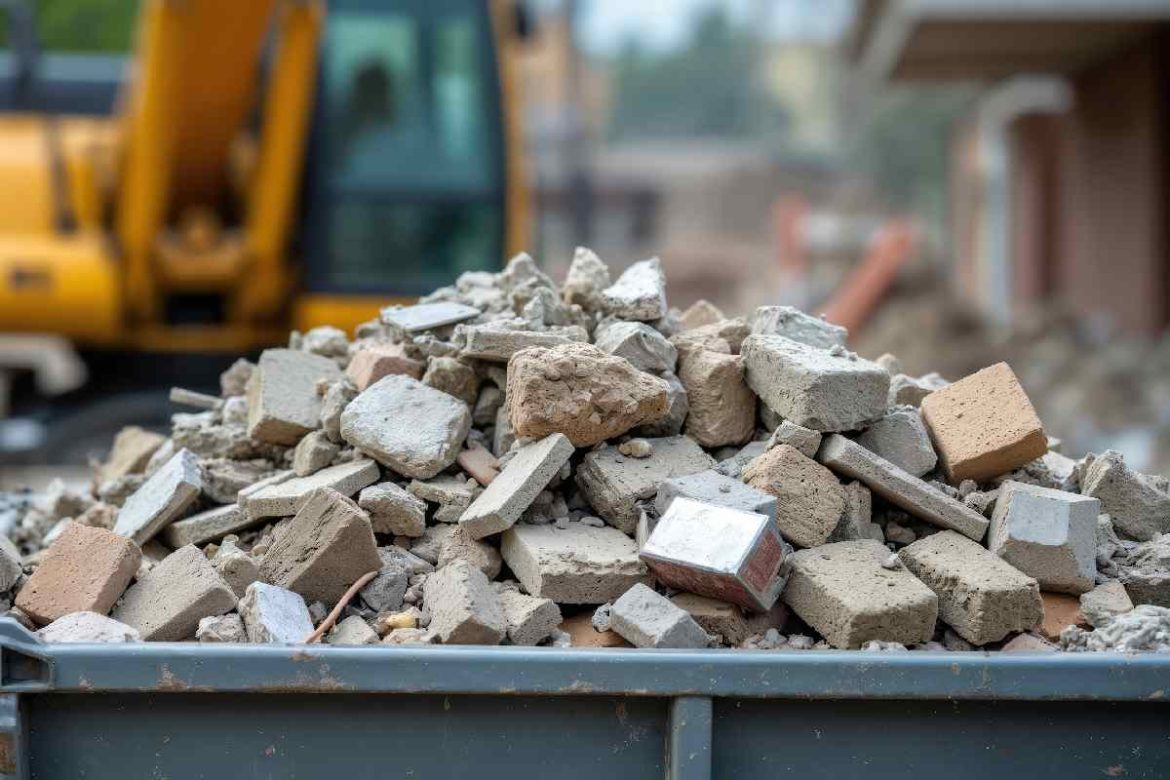A well-structured waste management plan is essential for any construction project. It helps reduce waste, control costs, and ensure the site stays safe and organized. Unfortunately, many projects run into problems simply because common mistakes are overlooked. These errors can lead to delays, fines, and extra expenses that could have been prevented. Knowing what to avoid can save time, money, and headaches down the line.
Below are some of the most costly mistakes made when developing and carrying out a construction waste management plan—and how to avoid them.
- Failing to Plan Before the Project Starts
One of the biggest mistakes is waiting too long to develop a waste plan. Some project teams only start thinking about waste management once the site is already active. By then, it’s often too late to make efficient decisions.
Planning ahead gives teams time to evaluate what materials will be used, how much waste will be generated, and how to dispose of it properly to ensure construction site safety. It also allows room to identify recycling opportunities or alternative uses for leftover materials. Without early planning, waste piles up fast, leading to confusion, inefficiency, and rising disposal costs.
Tip: Include waste management in the project’s early planning stage. Assign a person or team to oversee the process and update the plan as needed throughout the build.
- Ignoring Local Regulations
Every region has its own rules on how construction waste should be sorted, stored, and removed. Failing to follow these can result in heavy fines or legal action. Yet, some project managers assume that general practices are good enough.
Regulations may include requirements for recycling, proper labeling, or the handling of hazardous materials. Not checking these details in advance can lead to mistakes that are both costly and hard to fix later.
Example: A project disposing of treated wood in the same bin as general waste could violate local landfill restrictions, triggering penalties and causing delays.
- Using One-Size-Fits-All Disposal Methods
Treating all waste the same is another common problem. Not all waste needs to go to the same place, and not all of it should. For example, recyclable items like metal, cardboard, or concrete should be separated from general trash.
Some materials require their own dedicated containers. A good example is concrete washout. If not handled properly, it can contaminate soil and water. That’s why every site dealing with concrete should use a concrete washout bin to capture and contain runoff safely. These bins make cleanup easier and help meet environmental compliance standards.
Tip: Set up clearly labeled bins for different types of materials. Provide instructions to workers so they know what goes where.
- Overlooking Opportunities to Reduce and Reuse
Many construction sites throw away materials that could be reused or repurposed. This habit adds to disposal costs and increases the need for new materials, which also raises expenses.
Sometimes, materials like wood offcuts, bricks, or surplus tiles can be used later in the same project or stored for future use. Reusing materials is both cost-effective and environmentally responsible.
Example: Wooden pallets, instead of being tossed, can be reused for transporting other materials or even donated to nearby sites.
- Not Training Workers on Waste Procedures
Even the best waste plan fails if workers on site don’t understand it. Assuming everyone knows what to do can lead to mistakes like throwing recyclables into trash bins or dumping hazardous waste in regular containers.
Clear communication and simple training sessions can make a big difference. Everyone on-site should know how to sort waste, where bins are located, and who to ask if they have questions.
Tip: Include waste training during safety briefings or toolbox talks. Reinforce the process regularly to keep it fresh in workers’ minds.
- Skipping Regular Waste Audits
A waste management plan is not something to “set and forget.” Without regular checks, it’s easy to lose track of how much waste is being produced or whether procedures are being followed.
Routine waste audits help track progress, spot problems, and adjust the plan when needed. They also make it easier to report accurate numbers for compliance or sustainability goals.
Tip: Schedule audits every few weeks or after major project milestones. Keep records to compare performance over time.
- Poor Communication Between Teams and Contractors
Construction projects often involve multiple teams, subcontractors, and suppliers. If everyone is not on the same page regarding waste practices, confusion is inevitable.
For example, one team might sort waste carefully, while another may dump everything into the nearest bin. Lack of communication causes inconsistency and increases the chances of rule violations.
Tip: Hold short coordination meetings and distribute waste handling guidelines to all crews and contractors before work begins.
- Underestimating the Cost of Waste Disposal
Some teams forget to include waste disposal in the project budget. Others assume it won’t cost much, only to be surprised by fees for hauling, landfill tipping, or contamination penalties.
Not only does this put pressure on the budget, but it may also result in cutting corners to save money. That often leads to bigger problems later, including fines and cleanup delays.
Tip: Include detailed waste disposal costs in the initial budget. Consider the price of bins, transport, sorting, and recycling fees, along with a buffer for unexpected issues.
Conclusion
Avoiding these waste management mistakes can help a construction project run more smoothly, save money, and stay compliant with local laws. Planning early, training workers, separating waste properly, and regularly reviewing the plan are key steps toward better results. Small improvements in how waste is handled can lead to significant benefits over time. A well-managed site is not just cleaner—it’s also more efficient and less expensive. Taking the time to avoid these errors pays off in the long run.

